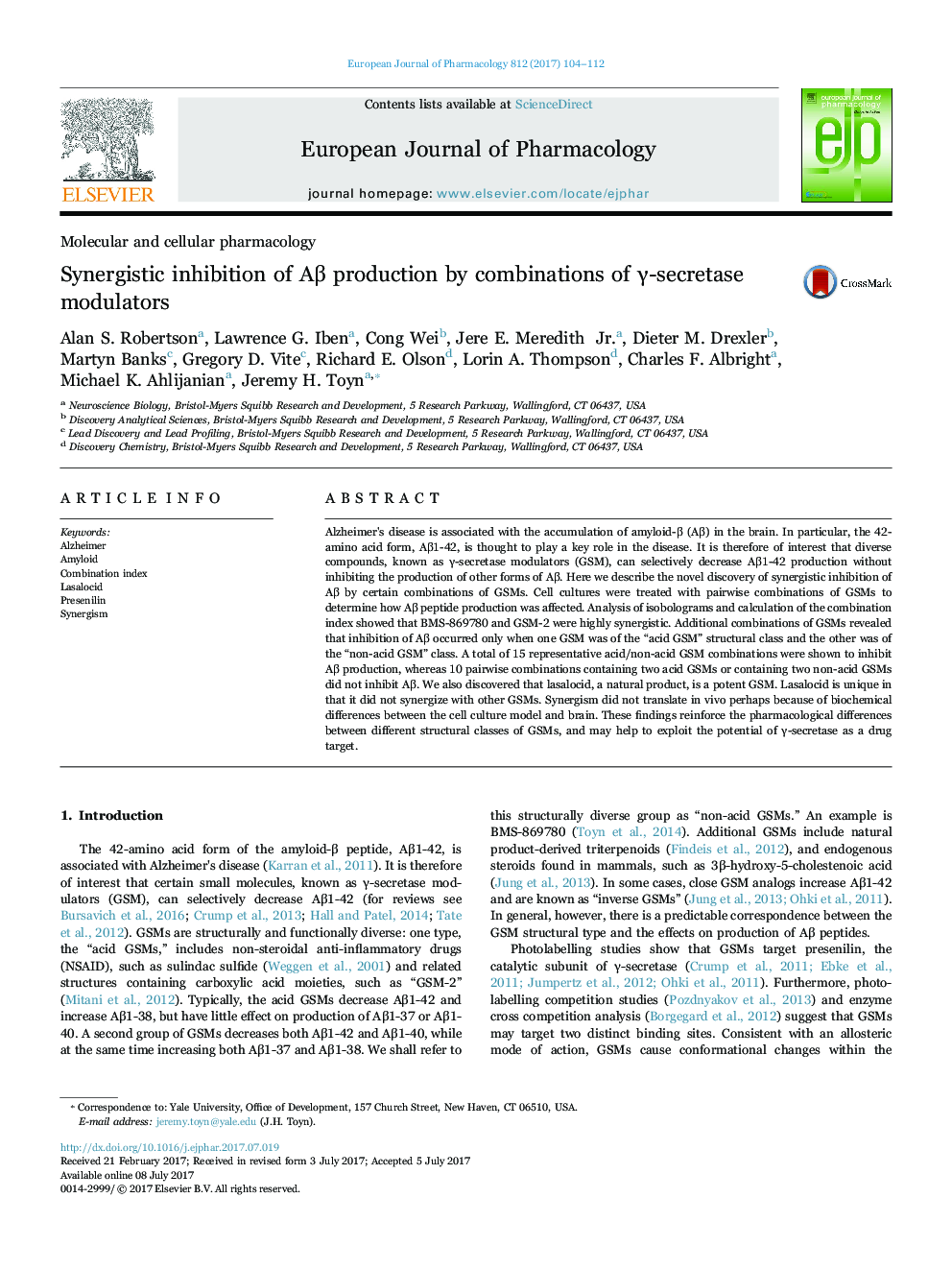| Article ID | Journal | Published Year | Pages | File Type |
|---|---|---|---|---|
| 5554403 | European Journal of Pharmacology | 2017 | 9 Pages |
Alzheimer's disease is associated with the accumulation of amyloid-β (Aβ) in the brain. In particular, the 42-amino acid form, Aβ1-42, is thought to play a key role in the disease. It is therefore of interest that diverse compounds, known as γ-secretase modulators (GSM), can selectively decrease Aβ1-42 production without inhibiting the production of other forms of Aβ. Here we describe the novel discovery of synergistic inhibition of Aβ by certain combinations of GSMs. Cell cultures were treated with pairwise combinations of GSMs to determine how Aβ peptide production was affected. Analysis of isobolograms and calculation of the combination index showed that BMS-869780 and GSM-2 were highly synergistic. Additional combinations of GSMs revealed that inhibition of Aβ occurred only when one GSM was of the “acid GSM” structural class and the other was of the “non-acid GSM” class. A total of 15 representative acid/non-acid GSM combinations were shown to inhibit Aβ production, whereas 10 pairwise combinations containing two acid GSMs or containing two non-acid GSMs did not inhibit Aβ. We also discovered that lasalocid, a natural product, is a potent GSM. Lasalocid is unique in that it did not synergize with other GSMs. Synergism did not translate in vivo perhaps because of biochemical differences between the cell culture model and brain. These findings reinforce the pharmacological differences between different structural classes of GSMs, and may help to exploit the potential of γ-secretase as a drug target.
